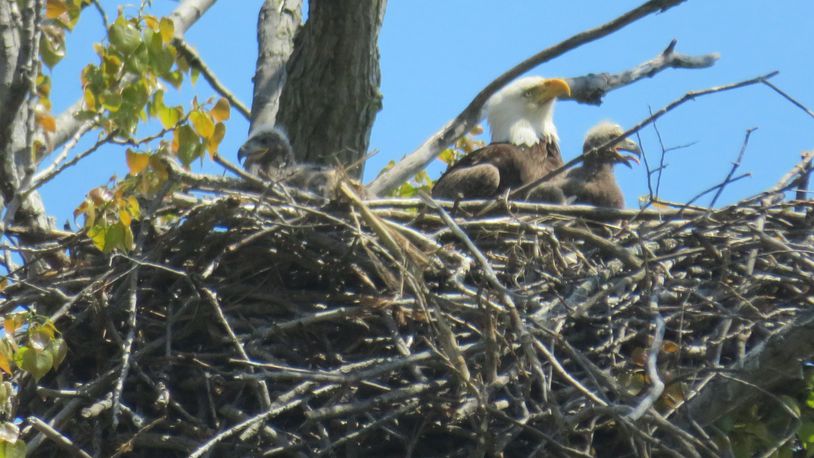>> RELATED: Carillon’s eaglets hitting ‘bored teenager’ stage, but they’ll get flying temps soon
New to birding? Not a problem — Audubon's free Bird Guide app is a great way to get started, or you can get to know common species by visiting the Audubon website.
There are plenty of bird-watching resources available online or at the bookstore. If you prefer people to publications, join a Facebook group like Birding Ohio for Regular Folks for down-to-earth advice or to share your photos.
Not sure how to get started? Need some help getting the kids onboard? Some of the “Regular Folk” from the Facebook group offer some guidance.
>> GET ACTIVE: How to get started paddling in the Miami Valley
🐦Lisa Marie Weiss (Washington Twp.)
I’m not a pro birder by any stretch, but my favorite places in Dayton are Sugarcreek MetroPark and Cox Arboretum. We bought an Ohio birds field guide at Wild Birds Unlimited in Kettering and my son would study it. We’d take it with us when we went out. My son was really into birds. He can recognize the calls and knows their shapes in the sky. There are apps you can get to hear their sounds. We had a couple seed feeders and several hummingbird feeders at home too. The kids can help with maintaining them. One thing that I think is important is when you go out, the kids have to be quiet and pay attention. If kids are running, shouting, chomping or stomping you’re not going to see or hear anything cool. Same if you bring your dog on a hike.
>> GET ACTIVE: How geocaching can add a little adventure to your days
🐦Sherri Harrington (Dayton native, Wright State graduate now in Delaware, Ohio)
I just started birding during the lockdown and it’s been a great hobby to pass the time while stuck at home. I’ve already learned a ton. I recommend having a camera on hand. Being able to look back at distinct features and compare similar birds has been very helpful in ID’ing the birds, vs. simply trying to remember what they looked like. Binoculars are fun for the kids. My kids love to take them to the park and pretend they’re on an adventure. The Merlin Bird ID app is free and is super helpful. You can hear their songs, see photos, read descriptions, and even upload a photo you’ve taken with very accurate identification results. Learning a little bit about birds’ migration, the foods they eat, and where they hang out can also help with ID’ing.
🐦Kathleen Gemmill (Chagrin Falls)
Start with a bird feeder in your own yard. It will give you an insight into why we do what we do and why it’s worthwhile. I am a total beginner and each day, in my own back yard, I am learning about birds I have never seen before.
>> THINGS TO DO: Want to take a hike? Here are a few of our favorite places
Daniel Lindesmith (Bowling Green)
I found out that to attract certain birds you need to put out certain foods. I strongly suggest suet more than anything. All birds love and need suet in their diet. Also get a halfway decent camera and a pair of binoculars. A nice bird book is handy. I use my “National Audubon Field Guide To North American Birds” (Eastern region).
🐦Jennifer Lambert (Springboro)
We’ve always been homeschoolers and avid birders. My kids share my contagious excitement when we see favorites or new birds in our back yard or on nature hikes. I have proactively taught them to be patient, still, and quiet. It’s worth the wait to see a special bird. We have guide books and apps for IDing song and sight. We keep journals on our nature finds. We practice our drawing and photography skills. Birding helps us appreciate and respect nature, extending to all the creator’s wonderful creatures.
Get to know these 15 common birds
These species can be spotted in urban, suburban, and rural spaces, and the majority frequent back yards and feeders.
• Northern cardinal
• Blue jay
• Mourning dove
• American crow
• European starling
• Dark-eyed junco
• Black-capped chickadee
• White-breasted nuthatch
• Tufted titmouse
• House sparrow
• House finch
• American goldfinch
• Downy woodpecker
• Hairy woodpecker
• Red-bellied woodpecker
Source: Audubon.org
About the Author
